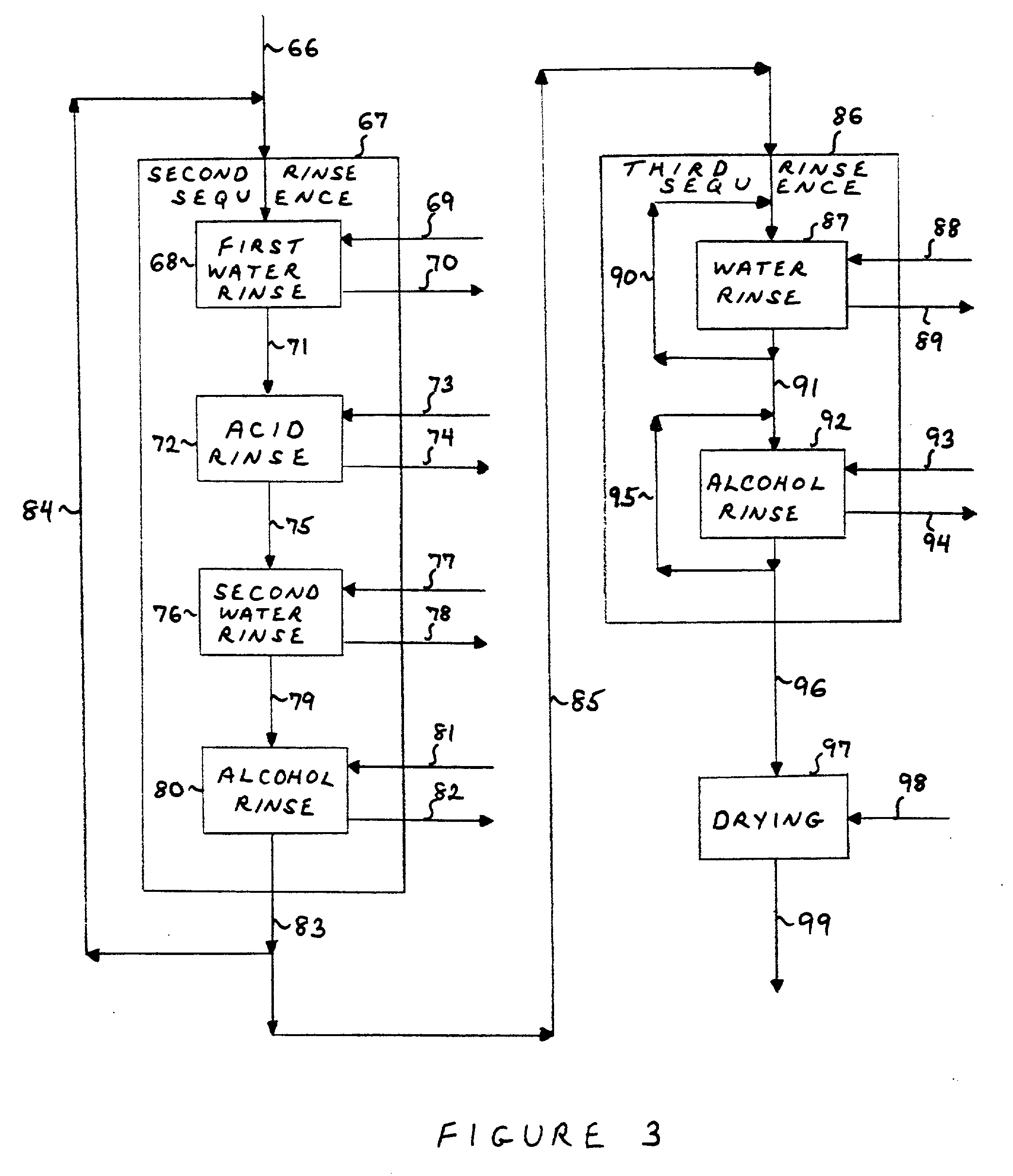Process for the preparation of noble metal coated non-noble metal substrates, coated materials produced in accordance therewith and compositions utilizing the coated materials
a noble metal and non-noble metal technology, applied in the direction of coatings, transportation and packaging, chemical coatings, etc., can solve the problems of inability to meet the requirements affecting the physical and electrical properties of the final coated product, and affecting the economic benefits of large-scale commercial use. , to achieve the effect of improving the economic benefits of large-scale commercial use, and improving the quality of the final produ
- Summary
- Abstract
- Description
- Claims
- Application Information
AI Technical Summary
Benefits of technology
Problems solved by technology
Method used
Image
Examples
example 1
Plating Silver Onto Copper Powder
[0085] The process for plating silver onto copper powder according to the present invention comprises the following steps:
[0086] a) Preparation of Starter Plating Solution
[0087] A starter plating solution containing free silver ions was prepared by first dissolving 2600 g. of potassium cyanide in 15 1. of boiling water, contained in a first enamel- lined kettle. To this was added 1300 g. of silver oxide (1210.3 equivalent g. silver) with constant stirring until dissolved.
[0088] b) Preparation of Plating Solution Baths
[0089] Five plating solution baths were prepared from the starter plating solution. Into a second enamel-lined kettle was poured 0.8 (12 1.) of the volume of solution in the first kettle. Hot water (3 1.) was added to raise the volume to 15 1. This became the first plating solution bath, having a free silver concentration of 64.55 g. / l. and supplying an equivalent weight of 968.2 g. of silver as free silver ions available for plating.
[00...
example 2
Plating Silver Onto Nickel Powder
[0104] The process for plating silver onto nickel powder according to the present invention comprises the following steps:
[0105] a) Preparation of Starter Plating Solution
[0106] A starter plating solution containing free silver ions was prepared by first dissolving 2240 g. of potassium cyanide in 15 1. of boiling water, contained in a first enamel-lined kettle. To this was added 1164 g. of silver oxide (1083.6 equivalent g. silver) with constant stirring until dissolved.
[0107] b) Preparation of Plating Solution Baths
[0108] Four plating solution baths were prepared from the starter plating solution. Into each of second, third and fourth enamel-lined kettles was poured 0.25 (3.75 1.) of the starter plating solution, leaving 0.25 of the solution in the first kettle. Hot water (11.25 1.) was added to each of the four kettles to raise the volume in each to 15 1. Each of the four plating solution baths had a free silver concentration of 18.06 g. / l. and sup...
example 3
Plating Silver Onto Copper-Seeded Aluminum Powder
[0119] The process for plating silver onto copper-seeded aluminum powder according to the present invention comprises the following steps:
[0120] a) Preparation of Starter Plating Solution
[0121] A starter plating solution containing free silver ions was prepared by first dissolving 990 g. of potassium cyanide in 15 1. of boiling water, contained in a first enamel-lined kettle. To this was added 495 g. of silver oxide (460.8 equivalent g. silver) with constant stirring until dissolved.
[0122] b) Preparation of Plating Solution Baths
[0123] Two plating solution baths of identical concentration were prepared from the starter plating solution. Into a second enamel-lined kettle was poured 0.5 (7.5 1.) of the starter plating solution, leaving the remaining half in the first kettle. Hot water (7.5 1.) was added to each of the kettles to raise the volume in each to 15 1. Each of the two plating solution baths had a free silver concentration of 1...
PUM
| Property | Measurement | Unit |
|---|---|---|
| Length | aaaaa | aaaaa |
| Fraction | aaaaa | aaaaa |
| Fraction | aaaaa | aaaaa |
Abstract
Description
Claims
Application Information
 Login to View More
Login to View More - R&D
- Intellectual Property
- Life Sciences
- Materials
- Tech Scout
- Unparalleled Data Quality
- Higher Quality Content
- 60% Fewer Hallucinations
Browse by: Latest US Patents, China's latest patents, Technical Efficacy Thesaurus, Application Domain, Technology Topic, Popular Technical Reports.
© 2025 PatSnap. All rights reserved.Legal|Privacy policy|Modern Slavery Act Transparency Statement|Sitemap|About US| Contact US: help@patsnap.com



